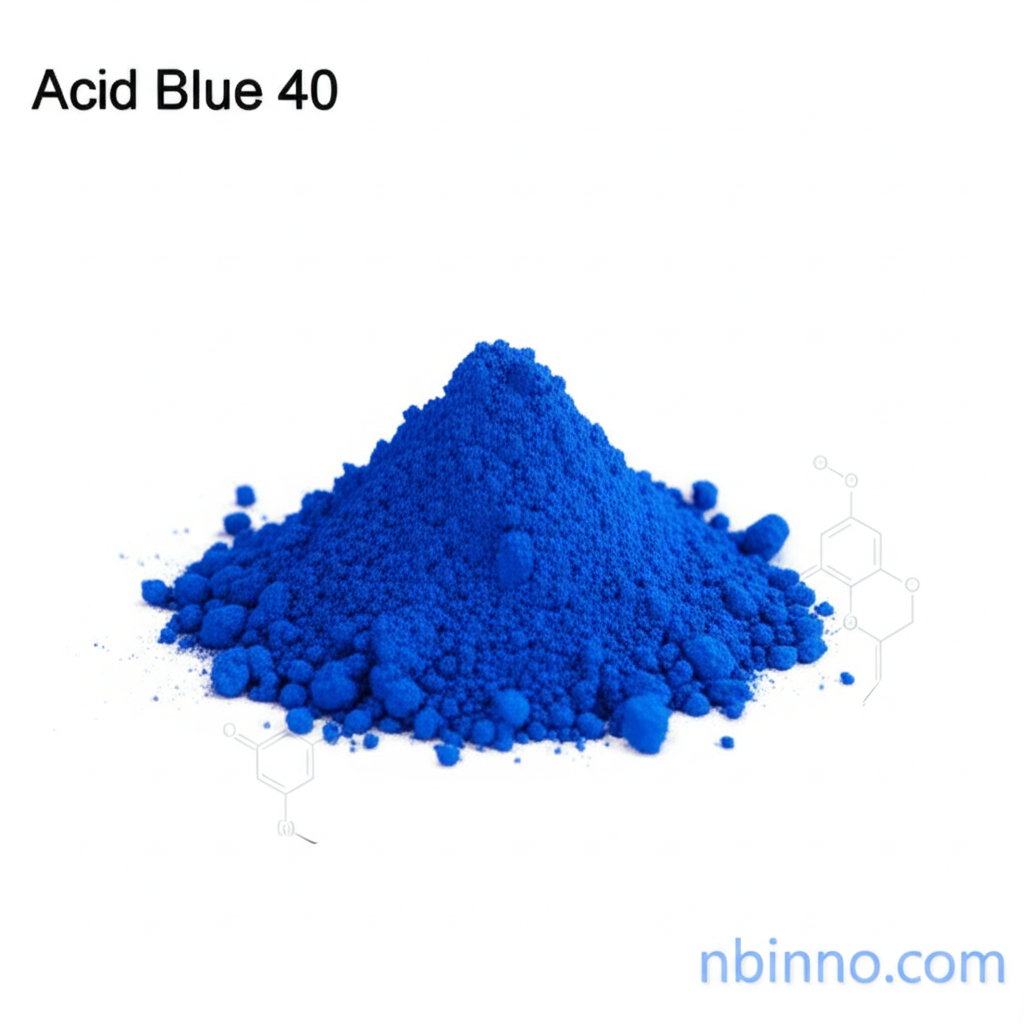Acid Blue 40: Properties, Applications, and Environmental Impact of a Key Anthraquinone Dye
Exploring the versatility and significance of Acid Blue 40 (CAS 6424-85-7) across various industries.
Get a Quote & SampleProduct Core Value

Acid Blue 40
Acid Blue 40, identified by CAS number 6424-85-7, is a vital anthraquinone dye characterized by its brown-blue powder appearance and high purity, often exceeding 99.0%. Its excellent solubility in water makes it a preferred choice for numerous industrial applications, from vibrant textile dyeing to coloring in the food and cosmetic sectors. Its molecular structure, C22H16N3NaO6S, contributes to its stability and performance.
- Discover the essential properties of Acid Blue 40, including its role as a crucial component in textile coloration and its high purity levels.
- Understand the diverse industrial applications of Acid Blue 40, ranging from dyeing silk and wool to its use as a food colorant.
- Explore the chemical structure and characteristics that make Acid Blue 40 a reliable choice for manufacturers seeking consistent color quality.
- Investigate the environmental considerations and advanced treatment methods for Acid Blue 40, such as Fenton reactions for dye degradation.
Key Advantages
Versatile Industrial Applications
Acid Blue 40 offers widespread utility, serving as a key dye for silk, wool, and synthetic fibers, as well as finding applications in leather, paper, and even certain inks and plastics. Its consistent performance across various materials ensures vibrant and lasting colors.
High Purity and Performance
With an assay typically above 99.0%, Acid Blue 40 guarantees reliable and consistent coloring results. Its chemical stability and solubility characteristics are crucial for achieving desired shades and ensuring the longevity of the dyed products.
Research and Development Utility
Beyond industrial use, Acid Blue 40 is valued in biological research for its potential in cell staining and microscopy, aiding scientists in visualizing cellular structures and processes. Its distinct color makes it an effective tool for detailed observation.
Key Applications
Textile Dyeing
Acid Blue 40 is extensively used in the textile industry for dyeing wool, silk, and nylon, providing rich, deep blue hues resistant to fading. Its ability to bond effectively with protein fibers makes it a staple for achieving high-quality fabric coloration.
Food and Beverage Coloring
Compliant with safety regulations, Acid Blue 40 serves as a coloring agent in the food industry, enhancing the visual appeal of products like candies and beverages. Its stability ensures consistent color intensity.
Cosmetic Formulations
In the cosmetics sector, this dye is incorporated into various products such as makeup and hair dyes, offering vibrant blue shades. Its stability and safety profile make it a popular choice in beauty industry applications.
Industrial and Research Use
Acid Blue 40 is also utilized in coloring paper, leather, and in laboratory research for staining purposes, contributing to both industrial production and scientific inquiry.
